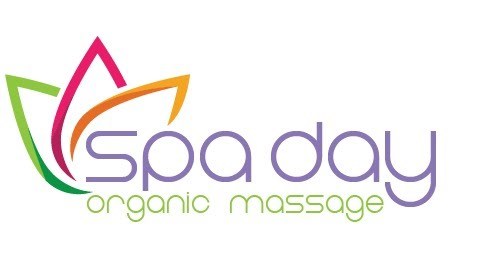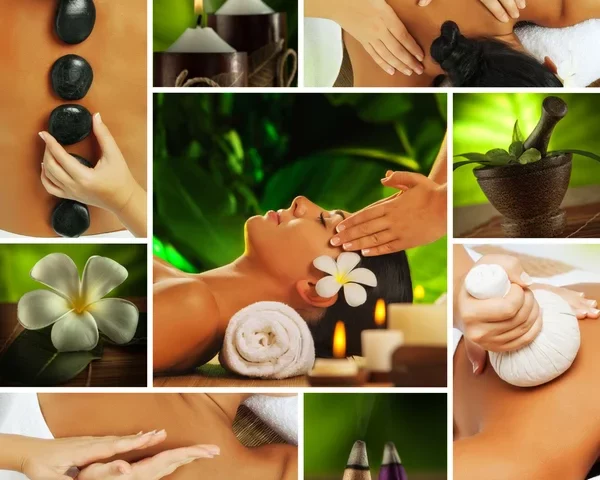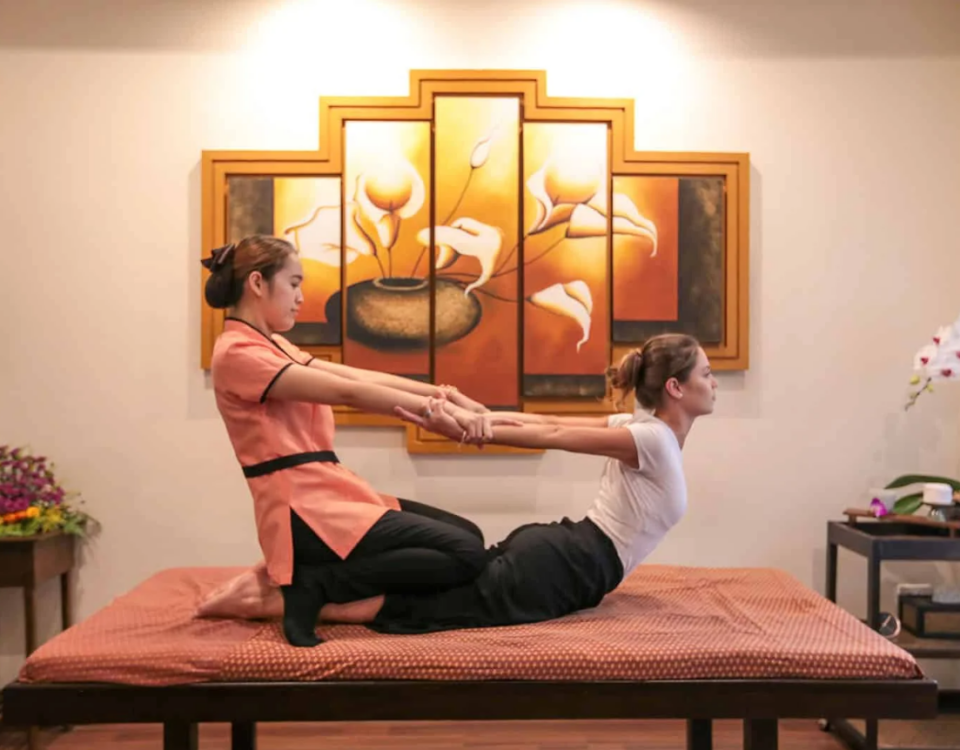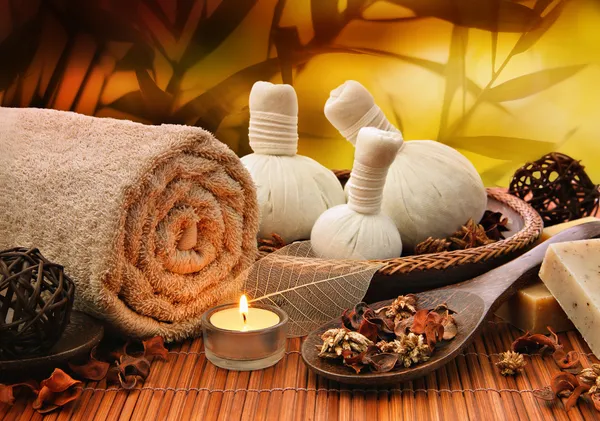
The History and Origins of Thai Massage: Exploring its Connection to Yoga, Ayurvedic Medicine, and Meditation
May 9, 2023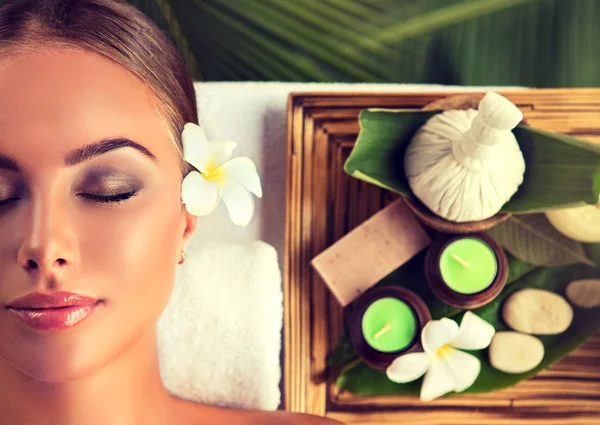
How to Prepare for a Thai Massage Session: Tips for First-timers and Regular Clients
May 9, 2023Introduction
Thai massage, an ancient healing system with roots in India, has evolved over centuries, giving rise to various techniques and styles. This comprehensive guide will explore these different techniques and styles, helping you understand the unique benefits and applications of each.
Traditional Thai Massage
As the core style from which other techniques and styles have emerged, traditional Thai massage forms the foundation of this ancient healing art. Discover the key techniques and benefits of this well-known practice.
Overview and Benefits
Traditional Thai massage, also known as Nuad Bo-Rarn, is the most well-known and widely practiced style. It involves rhythmic pressing, stretching, and twisting techniques, focusing on the body’s energy lines or “sen.” This style aims to release tension, improve flexibility, and restore balance in the body.
Key Techniques
Some key techniques employed in traditional Thai massage include palm pressing, thumb pressing, forearm rolling, and passive stretching. The therapist uses their hands, feet, and body to apply pressure and perform the stretches, often positioning the client in various yoga-like poses to achieve the desired results.
Thai Herbal Ball Massage
Combining traditional Thai massage techniques with the use of herbal compresses, Thai Herbal Ball Massage represents a fusion of ancient wisdom and modern wellness approaches. Learn about the unique benefits and techniques of this style.
Overview and Benefits
Thai Herbal Ball Massage, or Luk Pra Kob, combines traditional Thai massage techniques with the use of heated herbal compresses. These compresses, made of various herbs wrapped in a muslin cloth, are steamed and applied to the body to help alleviate pain, inflammation, and muscle tension.
Key Techniques
In addition to the standard Thai massage techniques, the therapist uses heated herbal balls to perform compressions and rolling movements. The heat and medicinal properties of the herbs work together with massage techniques to promote deep relaxation and healing.
Thai Foot Massage
By focusing on the feet and lower legs, Thai Foot Massage applies the principles of reflexology to stimulate overall health and well-being. Delve into the key techniques and benefits of this specialized technique.
Overview and Benefits
Thai Foot Massage is a specialized technique that focuses on the feet and lower legs. This style is based on the principles of reflexology, targeting specific pressure points on the feet to stimulate corresponding organs and systems within the body. It promotes overall health, relieves stress, and improves circulation.
Key Techniques
Therapists use their hands, fingers, and a wooden stick to apply pressure and stimulate reflex points on the feet. They also perform stretches and massage techniques on the lower legs to enhance the treatment’s effectiveness and promote relaxation.
Thai Oil Massage
For those seeking a gentler, more relaxing experience, Thai Oil Massage offers a soothing alternative to traditional Thai massage. Explore the benefits and techniques that set this style apart.
Overview and Benefits
Thai Oil Massage is a gentler, more relaxing variation of traditional Thai massage. It incorporates oils to facilitate smooth, gliding strokes, making it ideal for those seeking a more soothing experience. This style helps improve circulation, release muscle tension, and promote deep relaxation.
Key Techniques
Using warm oil, the therapist performs long, flowing strokes and kneading movements, focusing on the muscles and soft tissues. While the techniques are similar to those used in Swedish massage, Thai Oil Massage still incorporates some passive stretching to maintain the connection to traditional Thai massage principles.
Conclusion
There are various techniques and styles within the realm of Thai massage, each offering unique benefits and catering to different preferences. Understanding these differences can help you choose the most suitable style for your needs, ensuring a tailored and effective massage experience. Whether you seek relaxation, pain relief, or improved flexibility, Thai massage offers a range of options to promote health and well-being.
Thai massage, an ancient healing system with roots in India, has evolved over the centuries, giving rise to various techniques and styles. This comprehensive guide will explore these different techniques and styles, helping you understand the unique benefits and applications of each.
Traditional Thai Massage
Overview and Benefits
Traditional Thai massage, also known as Nuad Bo-Rarn, is the most well-known and widely practiced style. It involves rhythmic pressing, stretching, and twisting techniques, focusing on the body’s energy lines or “sen.” This style aims to release tension, improve flexibility, and restore balance in the body.
Key Techniques
Some key techniques employed in traditional Thai massage include palm pressing, thumb pressing, forearm rolling, and passive stretching. The therapist uses their hands, feet, and body to apply pressure and perform the stretches, often positioning the client in various yoga-like poses to achieve the desired results.
Thai Herbal Ball Massage
Overview and Benefits
Thai Herbal Ball Massage, or Luk Pra Kob, combines traditional Thai massage techniques with the use of heated herbal compresses. These compresses, made of various herbs wrapped in a muslin cloth, are steamed and applied to the body to help alleviate pain, inflammation, and muscle tension.
Key Techniques
In addition to the standard Thai massage techniques, the therapist uses heated herbal balls to perform compressions and rolling movements. The heat and medicinal properties of the herbs work together with massage techniques to promote deep relaxation and healing.
Thai Foot Massage
Overview and Benefits
Thai Foot Massage is a specialized technique that focuses on the feet and lower legs. This style is based on the principles of reflexology, targeting specific pressure points on the feet to stimulate corresponding organs and systems within the body. It promotes overall health, relieves stress, and improves circulation.
Key Techniques
Therapists use their hands, fingers, and a wooden stick to apply pressure and stimulate reflex points on the feet. They also perform stretches and massage techniques on the lower legs to enhance the treatment’s effectiveness and promote relaxation.
Thai Oil Massage
Overview and Benefits
Thai Oil Massage is a gentler, more relaxing variation of traditional Thai massage. It incorporates oils to facilitate smooth, gliding strokes, making it ideal for those seeking a more soothing experience. This style helps improve circulation, release muscle tension, and promote deep relaxation.
Key Techniques
Using warm oil, the therapist performs long, flowing strokes and kneading movements, focusing on the muscles and soft tissues. While the techniques are similar to those used in Swedish massage, Thai Oil Massage still incorporates some passive stretching to maintain the connection to traditional Thai massage principles.
Conclusion
There are various techniques and styles within the realm of Thai massage, each offering unique benefits and catering to different preferences. Understanding these differences can help you choose the most suitable style for your needs, ensuring a tailored and effective massage experience. Whether you seek relaxation, pain relief, or improved flexibility, Thai massage offers a range of options to promote health and well-being.
How to Prepare for a Thai Massage Session: Tips for First-timers and Regular Clients
